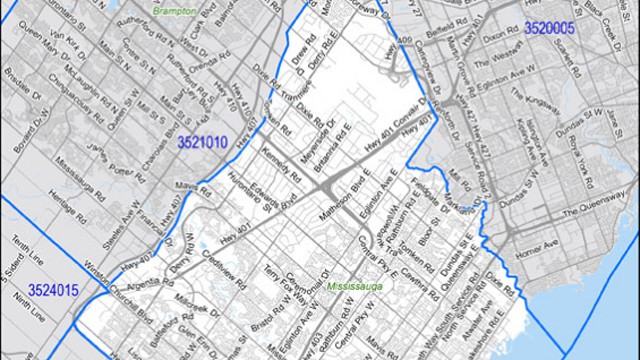Mississauga’s Population Growth Slows to a Crawl
Published February 9, 2017 at 5:02 am

Over the past few years, there’s been a lot of talk about the incredible growth that Peel–and Mississauga–has enjoyed and is expecting to continue to enjoy over the next few years.
For that reason, some people might have been surprised to see that Mississauga’s population didn’t grow much at all between 2011 and 2016, according to the 2016 Census. Data from the census indicates that Mississauga’s population inched up from 713,443 people five years ago to about 721,599 today.
That means the city only experienced about one per cent growth.
While the climb is small, Mississauga is still holding firm as the sixth largest city in Canada.
Interestingly enough, Mississauga’s neighbours have experienced significant growth over the last five years. Milton, Brampton and Caledon have all grown, with Brampton growing 13.3 per cent from 2011 until now. Now, Canada’s ninth largest city is home to 593,638 people. Caledon, Peel’s oft-ignored little town, grew from 59,460 people to 66,502.
Milton experienced incredible growth, with its population increasing from 84,362 to 110,128 (meaning it saw a pretty wild 30 per cent increase).
The city of Toronto enjoyed modest growth. The city is now home to 2,731,571 people (up from 2,615,060 people in 2011). That indicates growth of about 4.5 per cent.
As far as Canada in general goes, the census pegged the country’s population at 35,151,728. Data also revealed that three in five Canadians live in Quebec and Ontario and count for 61.5 per cent of the Canadian population. Ontario remains the country’s most populous province, as it houses 38.3 per cent of Canada’s population (about 13.4 million people).
The census also notes that from 2011 to 2016, Canada’s population increased by 1.7 million or five per cent, a slightly lower rate than 5.9 per cent from 2006 to 2011.
Data also indicates that about two-thirds of Canada’s population growth was the result of migratory increase (the difference between the number of immigrants and emigrants). Natural increase (the difference between the number of births and deaths) accounted for the remaining one-third. In the coming years, population growth in Canada is projected to be increasingly linked to migratory increase rather than natural increase, mainly because of low fertility and an aging population.
INsauga's Editorial Standards and Policies








